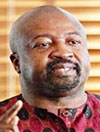THE Ministry of Social Cohesion from time to time has reported that it has done work in the communities and it has held workshops and other stakeholders’ forums. However, I get the sense that the overall work of the ministry is not being taken seriously by many individuals and groups, whose participation and cooperation are pivotal to any process of healing and reconciliation.
The opposition PPP, for example, has not been too enthusiastic about the ministry. And I don’t know how we can have any meaningful cohesion without the blessings of that party. There are other organisations which have not been engaged or have disengaged themselves.
But having said that, I do not think that the ministry has adequately articulated to the nation its understanding of the concept. I am sure there is one, but it has not been properly articulated—there has been no overarching message in this regard. Social Cohesion from my perspective is about education, conversation, communication and articulation of a national ethos in which all our diverse groups and communities feel respected and included. One must simultaneously speak to the nation and to its diverse communities. There is need for the mass media, the education system, the arts and popular culture in this process.
One gets mixed signals from the ministry. For example, one lead trainer at a training session some time ago downplayed the centrality of politics. I think that is an ill-informed approach, but if that is what the ministry sees as Social Cohesion, then say that. At other times, we hear about engaging “stakeholders”—a category that can include everybody and nobody.
There is no doubt that if Social Cohesion means breaking down the artificial walls of separation among groups and communities in the society, then such an effort must identify those walls and begin by tackling their origins. One, then, should determine the most effective tools and approaches to do that delicate repair work. There must be a distinction between artificial walls of separation and cultural boundaries—the latter are a function of diversity and not necessarily destructive
The task is multifaceted, but one cannot do any serious social cohesion work outside of the ethno-political divide. That’s the area where our polarisation is most glaring. If you start there, then you can open a conversation that could lead to other possibilities. But to ignore it as a critical area of discourse and engagement, as the ministry seems to be doing, is to commit an error only slightly less grave than doing nothing at all.
Remember, this is a government department and the government is dominated by a group of parties which represent only half of the electorate. As such, the ministry should be conscious of its role and for what its resources are used. The role of the ministry, to my mind, is to facilitate, to put mechanisms in place that are national in their conception and outlook. I see the Ministry of Social Cohesion as a “Bridge Ministry,” that simultaneously does a number of things.
First, to serve as a bridge between and among other relevant ministries such as Education, Youth, Culture, Amerindian Affairs, Information and Social Protection and agencies such as the Ethnic Relations Commission and Youth Empowerment. Second, it needs to facilitate national conversations among the various national ethnic organisations representing our various ethnic communities.
Third, it needs to serve as a bridge between our communities which exist side by side, often in ignorance and fear of each other. Fourth, it should serve as a bridge within the individual communities. In all our ethnic communities, there are religious, social-class, political-tribal and gender conflicts that cry out for resolution.
So, all this work should be done simultaneously. But the desire must flow from a larger vision of the ministry and the government. If I were advising the ministry, I would advise a national listening tour, whereby the ministry and other leaders go from community to community and find out from people what they understand the work of the ministry to be, what are their issues, insecurities and fears and how they think these can be corrected. It is not too late to do that.




.png)








